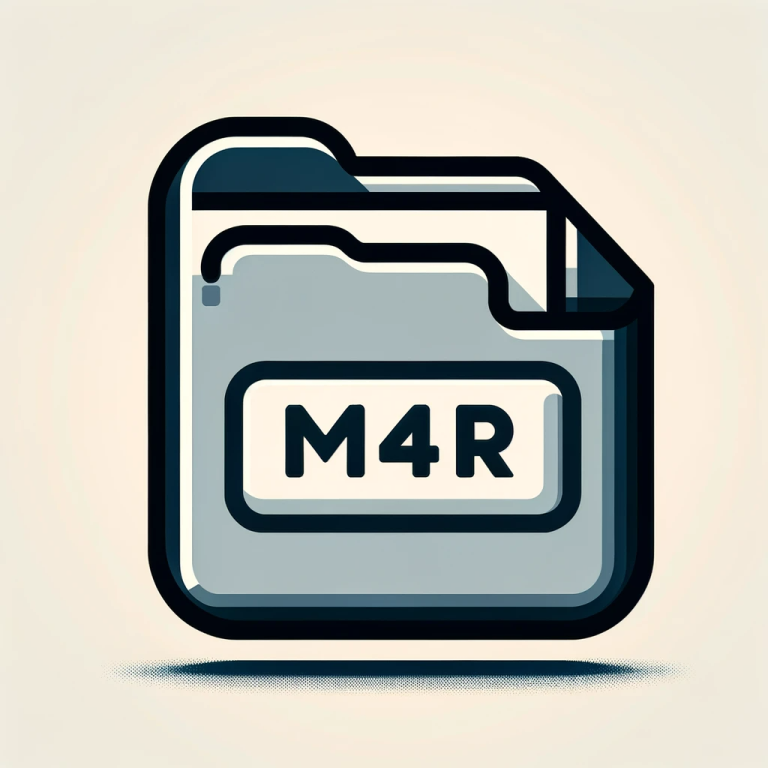.M4R File Extension

iPhone Ringtone File
| Developer | Apple |
| Popularity | |
| Category | Audio Files |
| Format | .M4R |
| Cross Platform | Update Soon |
What is an M4R file?
The .M4R file extension is closely associated with iPhone ringtones. In essence, it is a specialized audio file format developed by Apple Inc. for the iPhone.
Unlike the more common .MP3 or .WAV formats, .M4R files are specifically designed to serve as ringtone files on iOS devices.
More Information.
When the iPhone was first introduced, users were limited to the pre-installed ringtones provided by Apple. This restriction led to the demand for custom ringtones, prompting Apple to create the .M4R file format as a solution.
.M4R files are essentially a variant of the MPEG-4 audio file format (.M4A), which is commonly used for music and audio on Apple devices. The ‘R’ in .M4R stands for ‘ringtone,’ signifying its specific purpose.
Origin Of This File.
The .M4R file format made its debut when Apple introduced the iPhone in 2007. This format was created to provide iPhone users with a seamless way to customize their ringtones, allowing them to use their favorite songs or sounds as their phone’s ringtone.
File Structure Technical Specification.
.M4R files are audio files compressed using the Advanced Audio Coding (AAC) codec. They have a similar structure to .M4A files but are shorter in duration to serve as concise and looping ringtones.
They typically contain a snippet of audio, such as a chorus or a catchy melody, and are limited to a maximum length of 40 seconds.
These files can include metadata like artist information, song title, and album details, which are displayed when selecting a custom ringtone on an iPhone.
How to Convert the File?
Converting audio files into the .M4R format is a straightforward process. Here are the steps to convert audio files into .M4R format:
1. Select Your Audio: Begin by choosing the audio you want as your unique iPhone ringtone. It could be a song snippet, a sound effect, or any audio that resonates with you.
2. Trim Your Audio: Keep in mind that iPhone ringtones should be under 40 seconds. Use an audio editing tool like Audacity to trim your selected audio to fit this duration.
3. Save as .M4A: Save your trimmed audio in the AAC format with the .M4A file extension. This format is the foundation for .M4R ringtones.
4. Rename the Extension: Change the file extension from .M4A to .M4R. This step is essential as .M4R is the specific format for iPhone ringtones.
5. Open iTunes: Launch iTunes on your computer. It’s your go-to tool for managing and syncing your custom ringtone.
6. Add the .M4R File: In iTunes, click on “File” and select “Add File to Library.” Locate and choose your newly converted .M4R file.
7. Connect Your iPhone: Use a USB cable to connect your iPhone to your computer. iTunes should recognize your device.
8. Sync the Ringtone: In iTunes, click on your iPhone’s icon, usually found at the upper-left corner. Then, go to “Tones” under your device’s name. Check the “Sync Tones” option.
9. Apply the Changes: Select the .M4R ringtone you want to transfer and click “Apply” or “Sync.” Once done, you can set your unique ringtone in your iPhone’s settings.
Advantages And Disadvantages.
Advantages:
- Customization: .M4R files allow users to create unique ringtones, personalizing their iPhones with their favorite songs, sounds, or recordings.
- Compatibility: .M4R files are specifically tailored for iOS devices, ensuring seamless compatibility and a high-quality audio experience.
- Small File Size: The compressed AAC format used for .M4R files results in relatively small file sizes, conserving storage space on your device.
Disadvantages:
- Limited Use: .M4R files are primarily designed for iPhone ringtones, so their applications are limited to this specific purpose.
- Incompatibility: They are not universally compatible with all devices or platforms, making it challenging to use them outside of the Apple ecosystem.
How to Open M4R?
Open In Windows
- Install iTunes from Apple’s official website.
- Open iTunes and add .M4R files to your library via “File” > “Add File to Library.”
- Optionally, sync .M4R files with iOS devices.
- Play .M4R files directly in iTunes.
Open In Linux
- Convert .M4R to .MP3 or .OGG using software like FFmpeg.
- Play the converted file using your preferred audio player on Linux.
Open In MAC
- Use iTunes to open .M4R files.
- Add files to iTunes library and sync with iOS devices if needed.
Open In Android
- Convert .M4R to .MP3.
- Transfer the converted .MP3 to Android and set as ringtone in settings.
Open In IOS
- Use .M4R files as ringtones in “Settings” > “Sounds & Haptics.”
Open in Others
- Convert to a compatible format (e.g., .MP3).
- Play or use the converted file on the specific platform/device.













